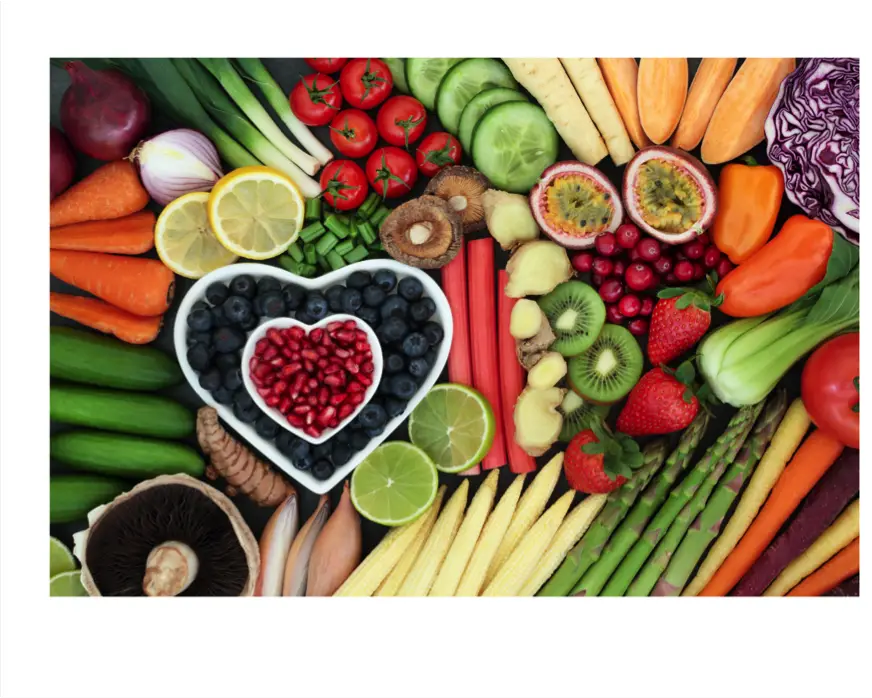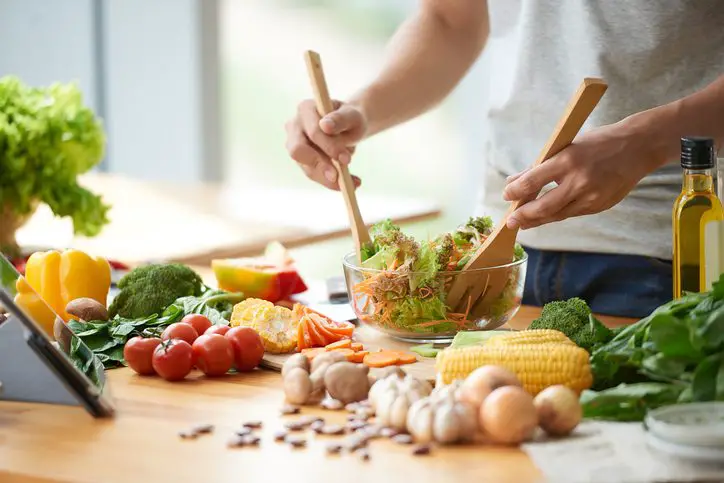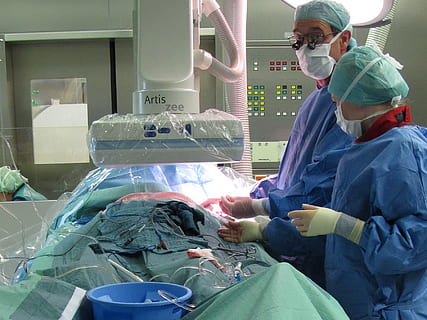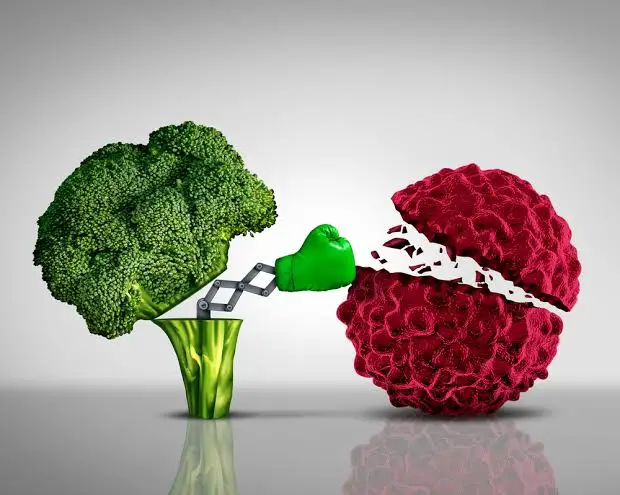Article reviewed and approved by Dr. Ibtissama Boukas, physician specializing in family medicine
Have you heard of the anti-inflammatory diet? By consuming specific foods, one can fight the inflammation in the body responsible for back pain and other chronic diseases.
What is the anti-inflammatory diet, exactly? What are these foods that would reduce inflammation in addition to improving health and vitality? On the contrary, what foods should be avoided given their propensity to aggravate the level of inflammation?
The article below explains everything you need to know about the anti-inflammatory diet (with video accompaniments).
What is inflammation?
Inflammation is a defensive response of the body. It occurs when we undergo an external or internal aggression (bacteria, virus, foreign bodies, wounds, etc.).
In the acute phase, this is a normal reaction of the body. Inflammation usually solves the problem quickly thanks to immune cells.
The main signs of inflammation are warmth, swelling, redness and pain.
Inflammation, what does it have to do with my back pain?
Science shows that in most cases, the maximum time for tissue to heal as well as possible is 3 to 6 months. Persistent pain beyond this period of time is a sign of an over-activation of the inflammatory system: It is therefore at this time that inflammation becomes problematic.
Indeed, in the case of back pain or chronic pain, the nervous system continues to react by sending warning signals inducing inflammation that causes pain despite the absence of a real cause. This process generates many complications that trigger a chain reaction: The vicious circle of pain.
Anti-inflammatory diet, what is it exactly?
"Scientists have shown that one of the best ways to reduce inflammation isn't in doctor's offices, but may be in our fridges!"
What is the anti-inflammatory diet, exactly? To get familiar with this type of diet, consider this: Some foods can increase inflammation in the body, while others can decrease it.
Unfortunately, the food industry pushes us to overconsumption with increasingly processed and lower quality products, it is a fact.
Overconsumption and processed foods are considered “inflammatory” and are the cause of most 21st century diseases such as diabetes, cardiovascular disease and cancer.
According to the World Health Organization (WHO), 39% of adults in the world are overweight and 13% are obese (In France, 50% of the population is overweight for 17% obesity) . The number of cases of obesity has almost tripled since 1975.
As you will have understood, this type of diet does not help our body when it comes to calming excessive inflammation.
Improving one's diet is a subject that concerns the entire population and each of us should take an interest in it in order to improve our health. It is all the more natural and relevant to look into the question of anti-inflammatory food when you suffer from pain or chronic illness.
The anti-inflammatory diet takes advantage of unique foods in our diet to achieve favorable health benefits. Among the many benefits, the following results can be expected:
- Reduction of back pain and chronic pain (we will come back to this later)
- Relief of symptoms in conditions such as psoas tendonitis, the Forestier's disease, the fibromyalgia,osteoporosis and Osteoarthritis.
- Alternative to anti-inflammatory drugs used to relieve joint pain
- Boost the immune system (which protects against coronavirus and other infectious diseases)
- Protect the body from infections
- Reduce the risk of diseases related to inflammation (heart disease, diabetes, cancer, intestinal disorders, Alzheimer's, etc.)
- Losing weight
- Reduce stress, anxiety and depression
- Recover faster after an operation
- Improve the quality of sleep
- Better skin
- Increase vitality and life expectancy
12 myths about losing weight when you have back pain
Article reviewed and approved by Dr. Ibtissama Boukas, doctor specializing in family medicine Several…
11 reasons to lose weight when you have back pain
Article reviewed and approved by Dr. Ibtissama Boukas, doctor specializing in family medicine Did you know…
Back surgery: 5 types of foods to eat after surgery
Article reviewed and approved by Dr. Ibtissama Boukas, doctor specializing in family medicine You…
Bariatric surgery: the solution to finally lose weight?
Article reviewed and approved by Dr. Ibtissama Boukas, doctor specializing in family medicine In…
Weight Loss and Back Pain: A Complete Guide (Theory)
Article reviewed and approved by Dr. Ibtissama Boukas, doctor specializing in family medicine How…
Osteoarthritis and diet: The complete guide (what to avoid?)
If you're one of the millions of people who suffer from osteoarthritis, you might be wondering…
How to adopt an anti-inflammatory diet?
Essentially, we should include as many anti-inflammatory foods as possible in our diet, as well as avoid pro-inflammatory foods. Simple, right? We will cover the 2 opposites in the next section.
Let's start with a food list of 13 powerful anti-inflammatory foods. Keep this list in mind the next time you go to the supermarket:
The 13 powerful anti-inflammatory foods to relieve you
Baies
Berries are small fruits rich in fibre, vitamins and minerals. Although there are dozens of varieties, some of the most common include:
- Strawberries
- Bilberries (blueberries)
- Raspberries
- Blackberries
The berries contain antioxidants called anthocyanins. These compounds have anti-inflammatory effects that can reduce the risk of disease, and relieve back pain.
In addition, the body produces cells called NK (Natural Killers) capable of killing tumor cells and infected cells. A scientific studies demonstrated that those who consumed blueberries on a daily basis produced significantly more NK cells than those who did not.
In an other survey, overweight adults who ate strawberries daily for 6 weeks had reduced levels of certain inflammatory markers.
Fatty fish
Fatty fish are an excellent source of protein and the long-chain omega-3 fatty acids EPA and DHA. (EPA and DHA are fatty acids with a role to play in fighting inflammation).
Although all types of fish contain omega 3 fatty acids, the best sources of fatty fish are:
- Salmon
- sardines
- Herring
- Mackerel
- Anchovy
Some studies Pilots found a reduction in C-reactive protein (CRP) in people consuming salmon or EPA and DHA supplements. CRP is a protein synthesized by the liver during acute or chronic inflammation in the body.
Broccoli
Broccoli is extremely nutritious. It is a cruciferous vegetable, like other types of cabbage (cauliflower, Brussels sprouts, kale, etc.).
Consumption of cruciferous vegetables has been shown to be associated with reduced risk of disease heart and cancer. Knowing that these diseases are linked to inflammation, it is believed that the components of broccoli promote an anti-inflammatory environment.
Indeed, broccoli is rich in sulforaphane, an antioxidant that fights inflammation by reducing the level of cytokines and NF-kB, a gene involved in the development and progression of inflammation.
Avocados
Avocados aren't called a "superfood" for nothing. They're packed with potassium, magnesium, fiber, and heart-healthy monounsaturated fats.
They also contain carotenoids and tocopherols, which are linked to a reduced risk of cancer (an inflammation-related disease).
In survey very interesting, volunteers ate a burger with or without a slice of avocado. Surprisingly, when people ate a slice of avocado with a burger, they had lower levels of NF-kB and IL-6 (markers of inflammation) compared to those who ate the burger alone.
Green tea
We often hear that green tea is excellent for health. Indeed, it is associated with a reduced risk of heart disease, cancer, Alzheimer's disease, and obesity.
Where do these almost magical properties of green tea come from? They are thought to be related to a substance found in green tea called Epigallocatechin gallate (EGCP).
EGCP inhibits inflammation by reducing the production of pro-inflammatory cytokines. It is also an antioxidant, which has the effect of fighting inflammation-promoting free radicals.
peppers
Bell peppers and chilies are rich in antioxidants and vitamin C. Like antioxidants, vitamin C reduces markers of inflammation and fights pro-inflammatory free radicals.
Bell peppers also contain quercetin, sinapic acid and ferulic acid. All components can fight inflammation, particularly responsible for back pain, sciatica, herniated disc, etc.
Portobello mushrooms,
While thousands of varieties of mushrooms exist worldwide, only a few are edible and grown commercially. Among the most popular are:
- Scams
- Portobello mushrooms
- Shiitake
Mushrooms are very low in calories, which is ideal when trying to lose weight. They are also rich in selenium, copper and B vitamins. They contain phenols and other antioxidants allowing an anti-inflammatory action.
Practical little tip: Cooking mushrooms would considerably reduce their and calm skin. Thus, it is best to eat them raw or lightly cooked.
Grapes
Grapes contain anthocyanins, which reduce inflammation. Additionally, they may reduce the risk of several diseases, including heart disease, diabetes, obesity, Alzheimer's disease, and eye disorders.
Grapes are also one of the best sources of resveratrol, another compound that has many health benefits. This antioxidant is even used in cosmetics for its anti-aging and healing actions.
In survey, people with heart disease who consumed grape extract daily experienced a decrease in inflammatory genetic markers, including NF-kB.
Turmeric
Turmeric is a spice often used in curries and other Indian dishes. Lately, it has received a lot of attention for its content of curcumin, a powerful anti-inflammatory nutrient.
Turmeric reduces inflammation linked to arthritis, diabetes and other diseases (including back pain). However, significant doses are required to achieve potable effects, otherwise consuming turmeric may not have the desired effects.
Practical little tip: Mix turmeric with black pepper to improve its anti-inflammatory effect. Indeed, pepper contains piperine, which increases the absorption of turmeric by 2000%. Another solution would be to ingest turmeric dietary supplements to obtain higher concentrations.
Extra virgin olive oil
Olive oil is a mainstay of Mediterranean cuisine. It is also one of the best sources of fat you can eat for its many health benefits.
Indeed, studies associate extra virgin olive oil with a reduced risk heart disease, brain cancer and other serious health problems.
In survey On the Mediterranean diet, CRP and several other inflammatory markers were significantly reduced in those who consumed 1,7 ounces (50 ml) of olive oil daily.
Interestingly, olive oil contains olecanthal. This antioxidant appears to have similar effects to ibuprofen. This may be of interest as an alternative for those who do not like taking medication for their back pain.
Practical little tip: Choose extra virgin olive oils over refined olive oils for their more effective anti-inflammatory properties.
Dark chocolate and cocoa
Dark chocolate is delicious, rich and satisfying. Often considered a treat due to its high calorie content, the fact remains that dark chocolate contains antioxidants that reduce inflammation.
The flavanols found in cocoa are responsible for the anti-inflammatory effects of chocolate, and help the proper functioning of the cardiovascular system.
Good news for smokers: One study found arterial vasodilation in smokers immediately after consuming dark chocolate, confirming the blood vessel benefits of flavanol-rich foods.
Practical little tip: Be sure to choose dark chocolate that contains at least 70% cocoa — a higher percentage is even better — to reap these anti-inflammatory benefits.
Tomatoes
Tomato is a powerful food. It is rich in vitamin C, potassium and lycopene, an antioxidant with impressive anti-inflammatory properties.
Specifically, the lycopene (which incidentally gives tomatoes their red color!) has been shown to be anti-cancer, in addition to reducing hepatic steatosis (excess fat in the liver).
In addition, a survey determined that drinking tomato juice significantly reduced inflammatory markers in overweight women. It is therefore an interesting solution when suffering from the back in particular.
Practical little tip: Cooking tomatoes in olive oil can maximize the amount of lycopene you absorb. This is because lycopene is a carotenoid, a fat-soluble nutrient that is best absorbed with a fat source.
Cherries
Cherries are delicious and rich in antioxidants, such as anthocyanins and catechins. These compounds are known to fight inflammation in the body.
In survey, when people consumed 280 grams of cherries daily for 1 month, their CRP levels (an inflammatory marker) decreased. What's particularly interesting is that these markers remained low even 28 days after I stopped eating the cherries.
What about natural food supplements?
Although they are not supported by solid scientific evidence, several dietary supplements and grandmother's remedies are used to treat body pain, in particular for their anti-inflammatory power. It is essential to consult a doctor beforehand, mainly to avoid drug interactions and side effects.
Here is a non-exhaustive list of plants and essential oils that are effective in controlling pain and inflammation. The products are available on the site Country. Use promo code LOMBAFIT15 if you wish to obtain one of the following products, or any remedy aimed at relieving your symptoms and improving your quality of life:
- Turmeric. As mentioned previously, thanks to its antioxidant and anti-inflammatory powers very powerful, turmeric is one of the most used plants in a culinary and therapeutic context. The composition of turmeric is essentially made of essential oils, vitamins (B1, B2, B6, C, E, K) and trace elements. But it is to its composition rich in curcumin and curcuminoids that we owe them and calm skin of this spice.
- Ginger. In addition to the special flavor it brings to the kitchen and its aphrodisiac properties, ginger is a root well known for its anti-inflammatory powers. the gingerol gives it its anti-inflammatory action. It is an active component acting on the inflammatory pain related to chronic joint inflammatory diseases, including rheumatoid arthritis, lupus, rheumatic diseases, etc. It has been proven that this active element is also effective in acting on the inflammation linked to arthritis and sciatica. Ginger also has other benefits thanks to its high potassium content and its richness in trace elements (calcium, magnesium, phosphorus, sodium) and vitamins (provitamin and vitamin B9).
- Omega-3s. Omega-3s are polyunsaturated fatty acids that play a very important role in the functioning of our body. They are provided by food in three natural forms: docosahexaenoic acid (DHA), alpha linolenic acid (ALA) and eicosapentaenoic acid (EPA). Beyond their action on the brain and the cardiovascular system, omega-3s prove very effective against inflammation. Indeed, they have the ability to act on the inflammatory mechanisms in osteoarthritis by slowing down cartilage destruction, thus they reduce the intensity of osteoarthritis pain. Since sciatica is most often linked to inflammation secondary to a herniated disc, it can also respond to omega-3s if you consume them regularly.
- Lemon eucalyptus. Eucalyptus is a plant most often used in the form of herbal tea or essential oil. She would have anti-inflammatory effects which give it the ability to act on the bone and joint pain in general and the pain of sciatica in particular.
- wintergreen. Wintergreen is a shrub from which a very interesting essential oil is extracted. It is one of the most used essential oils in aromatherapy. This oil extracted from the shrub bearing the same name, is used in massage to relieve sciatica and act like a analgesic. Indeed, it provides a heating effect thanks to its ability toactivate blood circulation locally.
Remember that these products do not replace medical treatment. Do not hesitate to consult for support adapted to your condition.
The main foods to avoid (pro-inflammatory foods)
On the other side of the spectrum, we have foods that increase the level of inflammation in the body. Obviously, these foods should be avoided as much as possible, especially for the damage they cause to health.
To put it simply: Avoid all ultra-processed products, fried products, cakes and confectionery, processed meats such as charcuterie, ham, nuggets, cordon bleu, etc.
There are other foods that are not prohibited, and which even have interesting nutritional qualities (such as red meat, ideally that of the butcher). Nevertheless, it is necessary to limit their consumption to promote an anti-inflammatory diet.
Also moderate the consumption of sources of saturated fats based on butter and oil. So watch out for butter spreads, butter and cream sauces, cooking oils and spreadable products. This effort will be decisive in the success and adoption of an anti-inflammatory diet.
Also, avoid using too much salt; Do not exceed 5 grams per day (one teaspoon). Currently the average consumption of a French person is 9 grams for men and 7 grams for women. To reduce salt. you can cook with spices chosen for their anti-inflammatory quality: Turmeric (combined with black pepper), ginger, cinnamon, chilli, sage, black cumin, basil, cardamom. You can also use thyme, rosemary, mint, garlic etc.
Another way to avoid salt is to use organic “Tamari” type sauces. In addition to reducing salt consumption, these sauces give flavor to all dishes and contain no fat. (FYI, it goes without saying that you have to choose low-salt Tamari).
Weight loss and anti-inflammatory diet
The body is a machine responding to the principles of thermodynamics. All the food we eat provides us with energy (calories). During a day, this energy is spent by our body to survive and respond to each of our actions (sleep, move, digest, etc.).
So three things can happen:
- If we consume more calories than we expend, then the body will store the extra in the form of fat cells: We will therefore gain weight.
- If we spend more energy than we consume, then the body will have to draw on our fat or muscle reserves to fill this gap: We will therefore lose weight.
- If the caloric balance is zero (calories expended = calories consumed): We stabilize our weight.
It's a simple principle, but it's the basis for understanding how the body works to understand the mechanisms of weight loss.
Adopting an anti-inflammatory diet will play on this "calorie balance" and promote fat loss thanks to the following three principles:
- Increasing your food volume/calorie density ratio: For the same amount of food on the plate, an anti-inflammatory diet will contain foods with a large volume that will take up space in your stomach, but with a very low caloric density. In short, your meals will be satiating but will contain fewer calories.
- The increase in your TEF (thermal effect of food): You will consume more calories during your digestion thanks to the anti-inflammatory diet. So even at rest, you will burn more calories!
- The increase in satiety: Thanks to the fibers present in anti-inflammatory foods, your feeling of hunger will decrease and you will consume fewer calories
For those who suffer from back pain, you should know that there is an indisputable and proven relationship between being overweight and lower back pain. In addition to the overload on the joints (especially the lower back), it is also the physiological, hormonal and even social changes that link excess weight and back pain.
Here is the result of scientific studies that clearly demonstrate the relationship between overweight and back pain:
- People with a "healthy" weight are the least at risk of developing lower back pain. Overweight people are at moderate risk, and obese people have the highest risk.¹
- A high BMI, combined with a high fat percentage, would be directly related to the prevalence and risk of low back pain.²
- Obesity increases the risk of low back pain and disc disease (problems with intervertebral discs), but would not be directly linked to degeneration of the spine, or to neck pain (neck pain).³
Conclusion
As you will understand, the anti-inflammatory diet plays a key role in improving health and vitality. This diet will bring you many benefits that go beyond your expectations.
The goal is to promote anti-inflammatory foods in your diet, as well as avoid foods that tend to increase the level of inflammation in the body.
Bon appetit, and happy healing!







